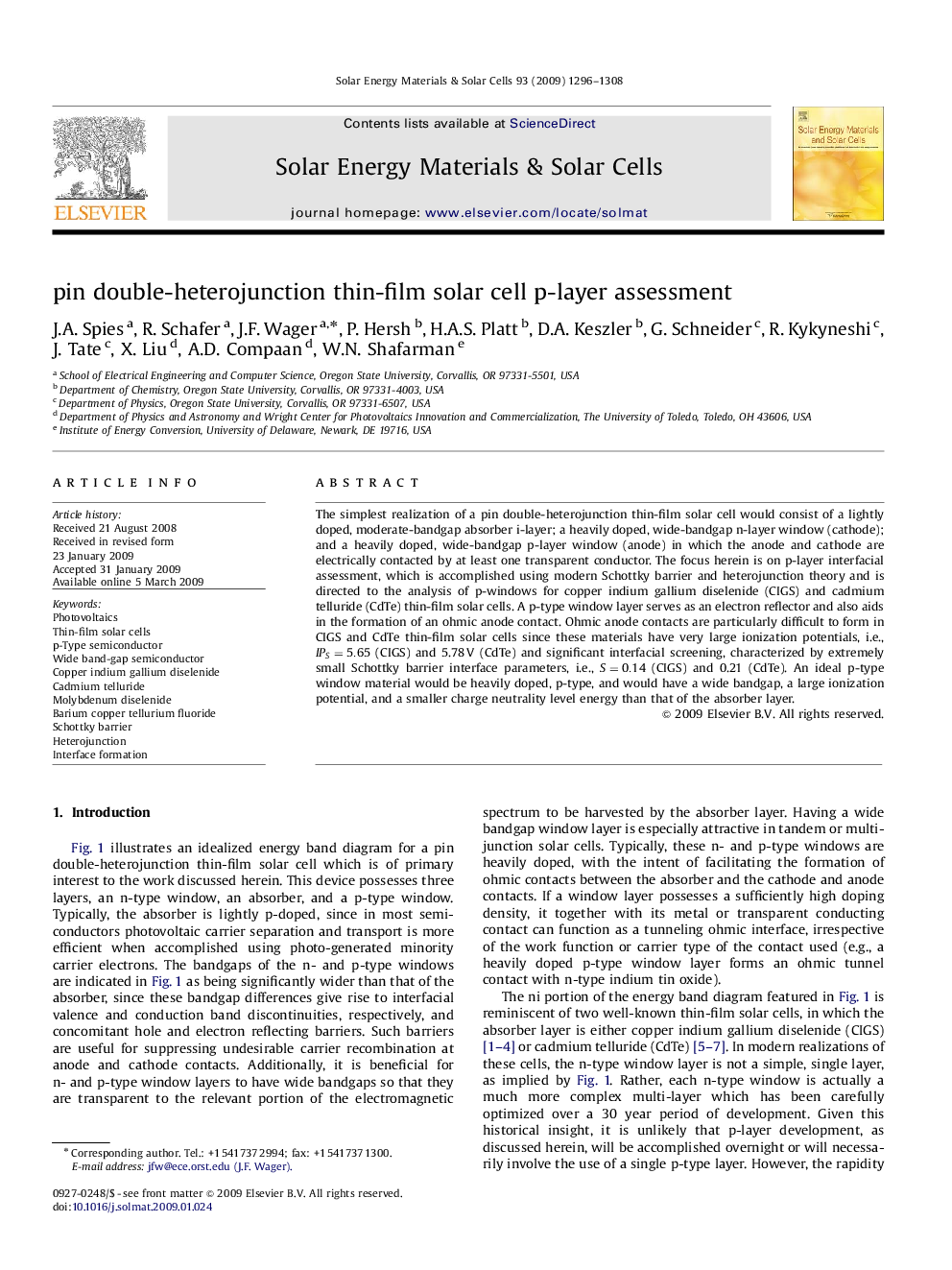| کد مقاله | کد نشریه | سال انتشار | مقاله انگلیسی | نسخه تمام متن |
|---|---|---|---|---|
| 80466 | 49387 | 2009 | 13 صفحه PDF | دانلود رایگان |

The simplest realization of a pin double-heterojunction thin-film solar cell would consist of a lightly doped, moderate-bandgap absorber i-layer; a heavily doped, wide-bandgap n-layer window (cathode); and a heavily doped, wide-bandgap p-layer window (anode) in which the anode and cathode are electrically contacted by at least one transparent conductor. The focus herein is on p-layer interfacial assessment, which is accomplished using modern Schottky barrier and heterojunction theory and is directed to the analysis of p-windows for copper indium gallium diselenide (CIGS) and cadmium telluride (CdTe) thin-film solar cells. A p-type window layer serves as an electron reflector and also aids in the formation of an ohmic anode contact. Ohmic anode contacts are particularly difficult to form in CIGS and CdTe thin-film solar cells since these materials have very large ionization potentials, i.e., IPS=5.65IPS=5.65 (CIGS) and 5.78 V (CdTe) and significant interfacial screening, characterized by extremely small Schottky barrier interface parameters, i.e., S=0.14S=0.14 (CIGS) and 0.21 (CdTe). An ideal p-type window material would be heavily doped, p-type, and would have a wide bandgap, a large ionization potential, and a smaller charge neutrality level energy than that of the absorber layer.
Journal: Solar Energy Materials and Solar Cells - Volume 93, Issue 8, August 2009, Pages 1296–1308